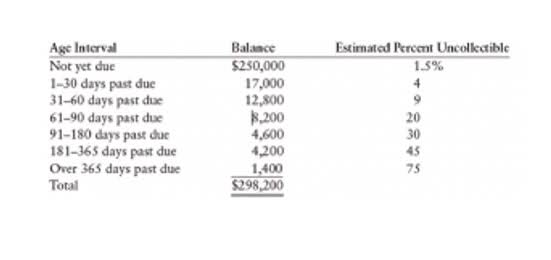
Factors such as accounting in oil and gas industry the type of crude oil, its sulfur content, and the presence of natural gas liquids can significantly influence the economic value. Additionally, external factors like oil prices, technological advancements, and regulatory changes play a pivotal role in reserve valuation. Financial models often incorporate scenarios to account for these variables, providing a range of potential outcomes. Oil and gas accounting is a specialized field that requires a deep understanding of both the industry and its unique financial practices. Given the sector’s complexity, accurate accounting is crucial for compliance, investment decisions, and operational efficiency. This annual publication provides an update on accounting, tax, and regulatory matters relevant to the oil and gas industry.

FIFO vs. LIFO: Accounting Methods and Their Impacts
- We strive to adopt a fixed monthly fee, so the costs are easy to manage, and there is no long term commitment.
- And based on that logic, you pretty much capitalize everything, even if you’re suffering through a string of dry holes.
- Depletion, depreciation, and amortization (DD&A) are critical components of financial accounting in the oil and gas industry, reflecting the gradual consumption of capital assets over time.
- It ensures that financial information is accurate, transparent, and aligned with industry standards, contributing to the overall integrity and sustainability of the oil and gas sector.
- You see such high percentages because of the sky-high depreciation, depletion & amortization (DD&A) numbers for oil & gas companies and because many companies record them differently for book and tax purposes.
- One of the primary objectives of leases project is to address the current-off-balance-sheet financing concerns related to a lessee’s operating leases.
- Accurate DD&A calculations are essential for providing a realistic view of a company’s financial health and asset value.
We discuss some of the publications in the second quarter below and encourage companies to monitor the CAQ website for current resources. Companies have undertaken and are generally in the process of making a diverse range of operational adjustments as well as a diverse and sometimes complex range of financing activities in response to the effects of COVID-19. The operational adjustments may have a material effect on a company that requires an obligation to disclose this information to investors.
Latest resources

A diversified oil & gas company has slightly different statements and you see more items related to its midstream and/or downstream capabilities; for a good example, click here to view Exxon Mobil’s financial statements. The alternative approach, known as the FC method, allows companies to capitalize on all operating expenses related to locating new oil and gas reserves regardless of the outcome. By meticulously analyzing operating expenses and production costs, oil and gas accountants identify areas for cost optimization, aiding companies in improving efficiency and maintaining competitiveness. Engaging consulting firms with expertise in oil and gas accounting can offer valuable insights and support for financial management initiatives.

The Role of Oil and Gas Accountants in the Energy Industry
Expenses should be recognized in the period in which they are incurred, helping to match costs with the revenue they generate. There are certain best practices in choosing software for oil and gas accounting, so let’s have a look at them so that you can make your choice more wise and well-thought. Oil and gas accounting is an absolutely important and maybe even underestimated area where a company’s performance and overall success depend on knowledge and experience. For example, what if a well site extracts oil or gas and then turns around and uses some of it to power the machinery at the well site? Turns out, you don’t – the government doesn’t tax it, and the interest owners don’t receive a royalty, on the grounds that you otherwise https://www.bookstime.com/ would have had to bring in the fuel from somewhere else, which counterbalances the lost revenue. One is that the buyer of the oil or gas pays the government, so it’s essentially acting like an agent, withholding the amount of the tax from what it would otherwise have paid to the interest owners.

HAVE TAX QUESTIONS? WE HAVE ANSWERS!
- This is where a pipeline owner commits to taking a minimum amount of gas from a well site each month.
- One is that the buyer of the oil or gas pays the government, so it’s essentially acting like an agent, withholding the amount of the tax from what it would otherwise have paid to the interest owners.
- What if you then shift that oil or gas to a nearby property and use it to power the equipment over there?
- I hinted at this in the last part of the NAV explanation above, but sum of the parts is a very common valuation methodology in the energy industry.
- Each method highlights the individual costs, which fall into the categories of acquisition, exploration, development, and production, differently.
- The process begins with geological and engineering assessments to determine the quantity of recoverable hydrocarbons in a reservoir.
These contracts require careful analysis to determine when and how revenue should be recognized. The Financial Accounting Standards Board (FASB) and the International Financial Reporting Standards (IFRS) provide guidelines to ensure consistency and transparency in revenue reporting. The principle outlines when and how to recognize revenue from the sale of goods or services. It provides guidance on the recognition criteria, measurement, and disclosure of revenue in financial statements. Given the volatility of oil and gas prices, companies in this industry often engage in hedging activities to manage their exposure to price fluctuations. Reserves are https://www.instagram.com/bookstime_inc estimated quantities of oil and gas that can be economically recovered from known reservoirs under existing economic conditions and operating methods.

Types of Costs in Oil and Gas Operations
Or, the government that controls the drilling production process decides to alter tax rates, or it alters the requirements to restore well sites after production is done. What this means is that an oil and gas firm could appear to have perfectly reasonable asset levels in one year, and finds itself writing off a good chunk of those assets in the next year. The main concern is with companies using the full cost method, since they tend to overload their balance sheets with assets.
Should your business nearshore operations back to North America?
Article 11 of Regulation S-X also requires registrants to file unaudited pro forma financial information relating to the acquisition or disposition. DD&A, production expenses, and exploration costs incurred from unsuccessful efforts to discover new reserves are recorded on the income statement. Initially, net income for both an SE and an FC company is impacted by the periodic charges for DD&A and production expenses, but net income for the SE company is further impacted by exploration costs that may have been incurred for that period.
Leave a Reply